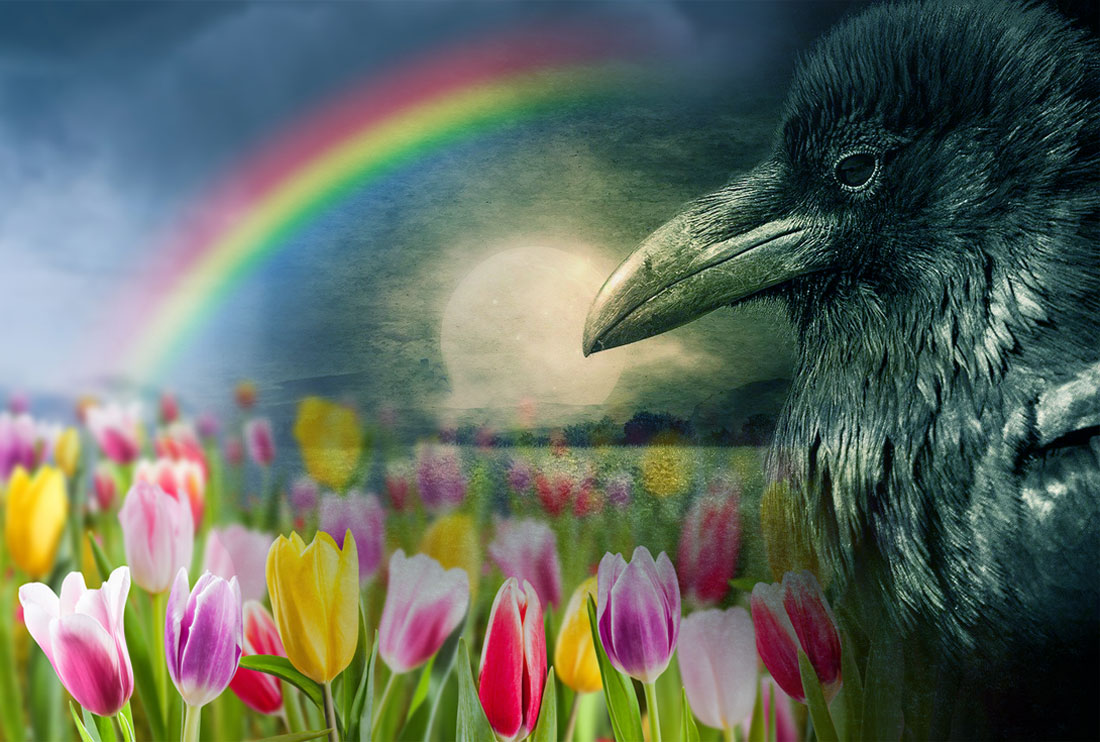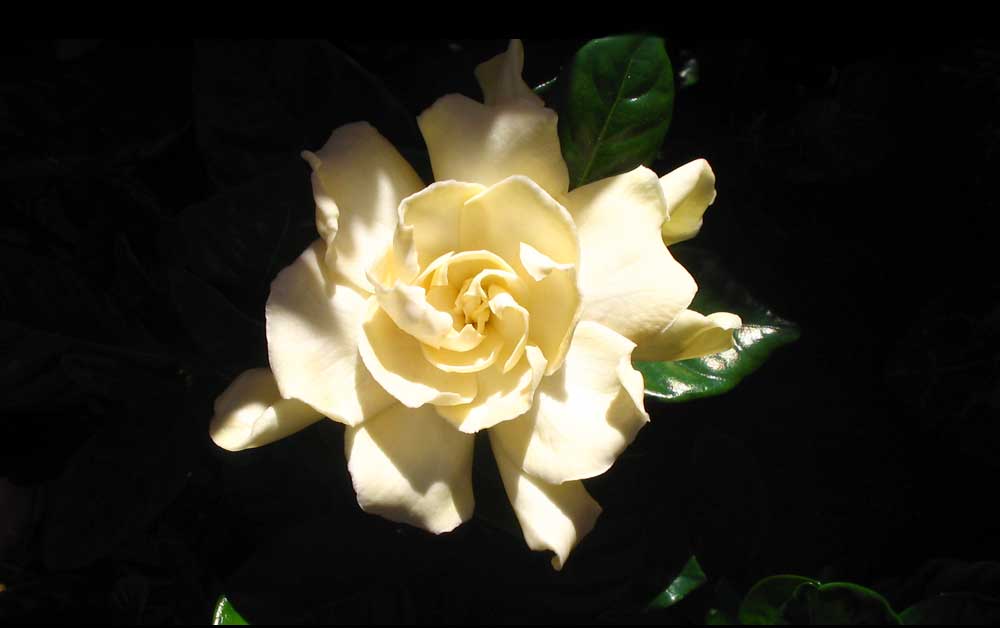Last Updated on December 4, 2024 by Avia
Have you ever looked up at the sky and noticed something strange? A rare cloud formation, perhaps? What may seem like an odd sight to you is actually a very interesting phenomenon. That’s right, every now and then, nature likes to surprise us with unique clouds. From Mammatus clouds to the recent rare sighting of the “mother of pearl” cloud (known as nacreous clouds) – these formations can be rare but beautiful sights. So what causes these rare clouds? What do they symbolize? I hope to answer these and more questions here. So, read further about rare clouds and their meanings
Table of Contents
Meaning of Clouds in Cultural Myth, Legends, and Lore
People have long associated clouds with various gods and goddesses. In ancient Greece, Zeus was often depicted as a cloud-gathering god. Thor was associated with thunder and lightning, and by association, this Norse god is linked to the power of clouds.
In different cultures around the world, clouds often symbolize different things. For example, in Chinese culture, clouds are often seen as a symbol of good luck. Chinese dragons are often depicted with clouds and seen as benevolent creatures that bring rain to parched lands.
In Japanese culture, clouds are often seen as a symbol of strength and power. In Native American cultures, clouds are often seen as a symbol of spirituality and connection to the natural world.
Hindu and Tibetan perspectives hold clouds as symbols of change, and these fluffy puffs signify transition. They are symbolic of the zen concept of impermanence and the power of detachment.
Symbolic Cloud Meanings in General
Clouds can also symbolize hope, new beginnings, and good luck. A bright sky full of fluffy white clouds is often seen as a sign of good things to come. In some cultures, seeing a cloud during a time of trouble is seen as a sign that help is on the way.
Clouds combine the symbolism of both air and water. In esoteric symbolism, air represents the realms of the mind (thought, mentality). Water represents themes of emotion, intuition and the psyche. As clouds combine these two elements, they symbolize balancing thought with emotion.
Clouds and their meaning are often associated with fertility and life. Because clouds store moisture and early cultures observed rain falling from clouds – they earned a reputation as living-giving essences rolling across the skies. So, you could say both common and rare clouds symbolize fertility, abundance, and prosperity.
Whether you see them as natural wonders or mystical omens, there’s no denying that clouds are one of the most interesting things in the sky.
Top Rare Clouds and Their Meanings
There are many different types of clouds, each with its own unique properties. Some clouds are very common, while others are quite rare. In this section, we will take a look at some of the rarest and most interesting clouds and what they can symbolize.
Nacreous (Mother of Pearl) Clouds

Nacreous Clouds, also known as “Mother of Pearl” clouds, are a type of rare cloud that is only seen in very high latitudes. These clouds get their name from their iridescent appearance, which is caused by how sunlight reflects off of them (the term nacre means mother of pearl).
Mother of pearl clouds are usually only seen during the winter months, and they are most commonly found in the Arctic regions. However, a rare sighting of a mother-of-pearl cloud was spotted in Scottland recently.
These clouds form when the air is extremely cold (usually below -85 degrees Fahrenheit), and there is very little moisture in the atmosphere. The sun reflects off of these clouds in such a way that they appear to be glowing or shimmering. Nacreous clouds are often mistaken for auroras, but they are actually a completely different phenomenon.
While nacreous clouds are generally harmless, they can sometimes signify an impending storm. If you see these clouds, it’s important to be aware of the possibility of severe weather conditions and take appropriate precautions.
The symbolic meaning of nacreous clouds varies depending on culture and tradition. In some cultures, these clouds are seen as a sign of good luck or fortune. In others, they may be seen as a sign of impending danger or bad news. No matter what your beliefs may be, nacreous clouds are definitely a sight to behold!
Lenticular Clouds
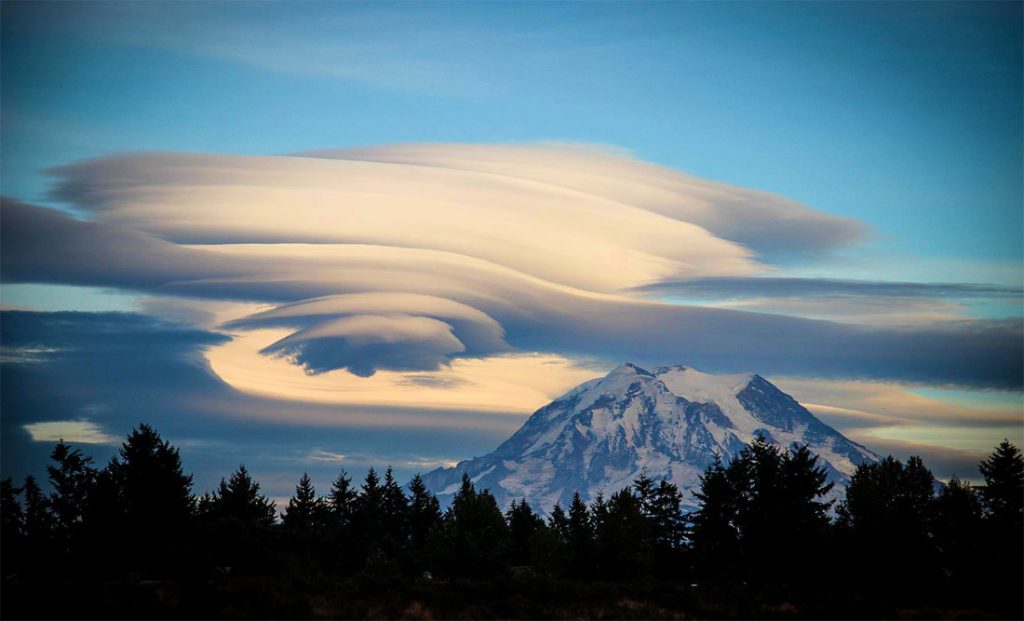
The impressive yet rare lenticular clouds are another type of rare cloud that is often mistaken for UFO’s! These cloud formations occur when stable air flows over mountains or other obstacles. Lenticular clouds can take on many different shapes, but are typically lens-shaped or disc-shaped. These Clouds often symbolize good luck or fortune.
Lenticular clouds are one of the most fascinating and beautiful types of clouds, but they are also quite rare. These clouds form when air flows over a mountain or other obstruction and is forced to rise. As the air rises, it cools and condenses into water droplets, which form the cloud.
These clouds can be very large, sometimes extending for several miles. They often have a lens-shaped appearance, hence their name. Lenticular clouds can be stationary or moving, depending on the wind conditions.
While they are not particularly dangerous, lenticular clouds can pose a hazard to aircraft. This is because they can cause turbulence and downdrafts that can make flying difficult or even impossible. For this reason, pilots typically avoid flying through them if possible.
Roll Clouds
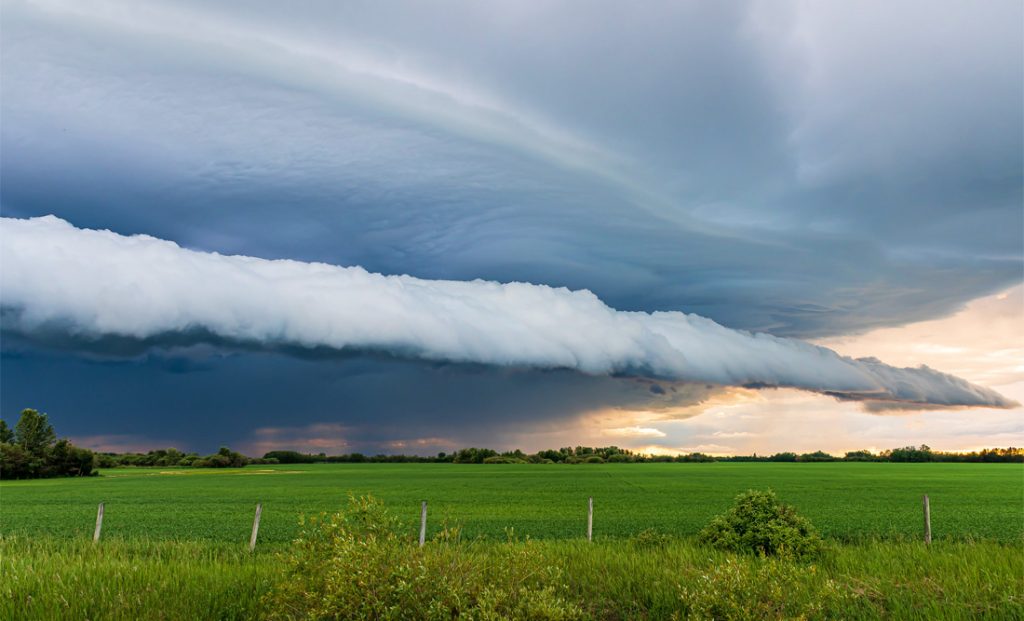
Another rare cloud type is the roll cloud. Also known as arcus clouds, these clouds are relatively short-lived and only form under specific conditions. They typically occur in areas where cold air meets warm air, such as along coastal areas. Roll clouds can be a few kilometers long and often appear as if they are rolling along the ground. These clouds can signify impending bad weather, as they often precede thunderstorms or other forms of precipitation.
Roll clouds are a type of low-level atmospheric phenomenon that can occur when two different air masses collide. These types of clouds are relatively rare but can be seen in various parts of the world. Roll clouds often have a horizontal orientation and can appear to roll or rotate as they travel through the sky.
While roll clouds can be a fascinating sight, they can also indicate dangerous weather conditions. If you see a roll cloud, it’s important to pay attention to the surrounding weather conditions and be prepared for possible severe weather.
Morning Glory Cloud
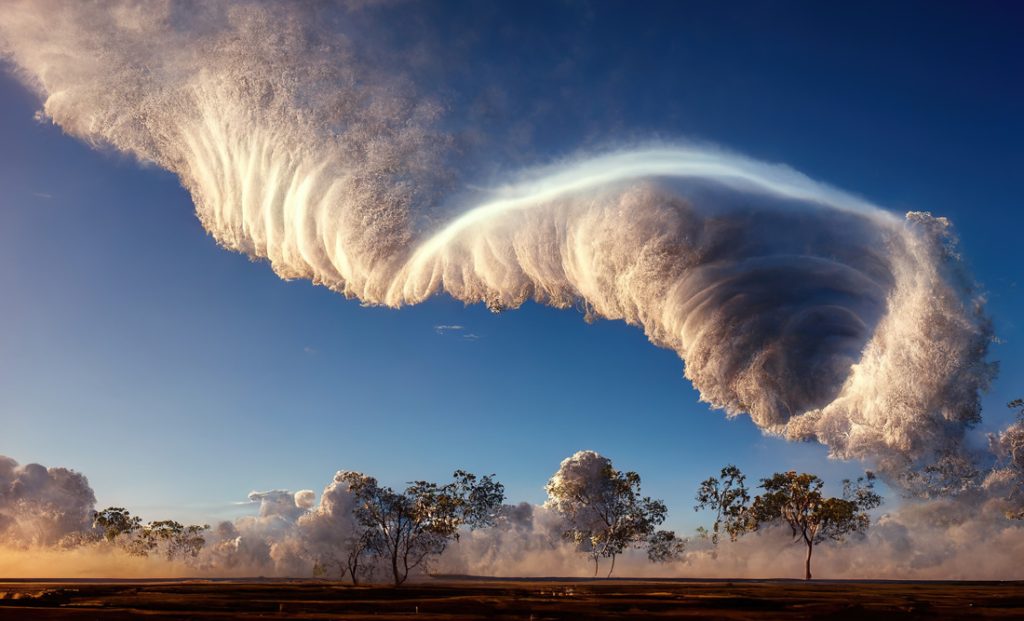
Another type of roll cloud is known as the Morning Glory cloud, which most notably billows in the Gulf of Carpentaria in northeast Australia. These clouds form in the early morning hours. They can be up to 1000 kilometers long, and can reach altitudes of over 8 kilometers. Morning Glory clouds are named for their resemblance to the flower of the same name. These clouds can signify good weather to come, as they often precede a period of stable atmospheric conditions.
This unique cloud formation is caused by a temperature inversion. A temperature inversion is when there is a layer of warm air above a layer of cold air. The warm air helps to lift the cold air up into the atmosphere. The cloud forms when the cold air meets the warm air and condenses into water droplets.
The Morning Glory Cloud can be symbolic of hope and new beginnings. The colors of the cloud are often associated with peace and serenity. For many people, the sight of the Morning Glory Cloud is a sign that good things are on the horizon.
Asperitas Clouds
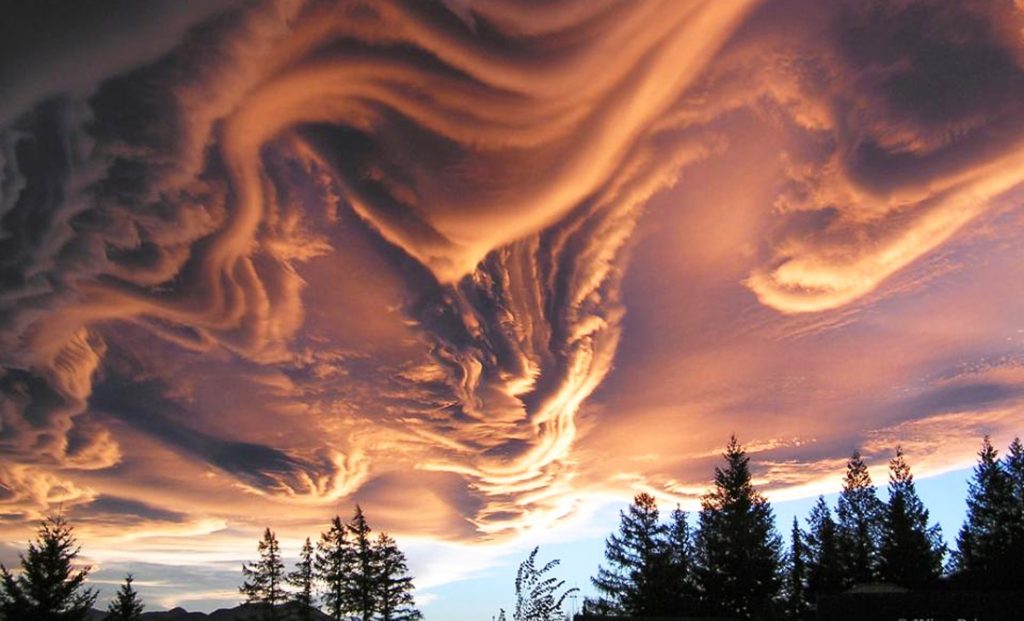
Asperitas clouds are one of the rarest types of clouds, and they’re also some of the most beautiful. These low, wavelike clouds often have a pink or purple hue, and they can form in any season. Asperitas clouds get their name from the Latin word for “rough.” They often look like waves crashing against the sky.
These cloud formations are caused by a combination of factors, including unstable air, high humidity, and strong winds. When these conditions come together, they can create the perfect environment for asperitas clouds to form.
While asperitas clouds are relatively uncommon, they’re becoming more widely seen as climate change causes our weather patterns to become more extreme. In fact, according to one study, asperitas clouds could become up to three times more common in a warmer world.
Not only are asperitas clouds stunning to look at, but they also have symbolic meaning. In many cultures, these unique-looking clouds are seen as a sign of good luck or even a divine presence. So next time you see one of these rare beauties in the sky, take a moment to appreciate its beauty – and all the good it might bring your way.
Fallstreak Hole Clouds
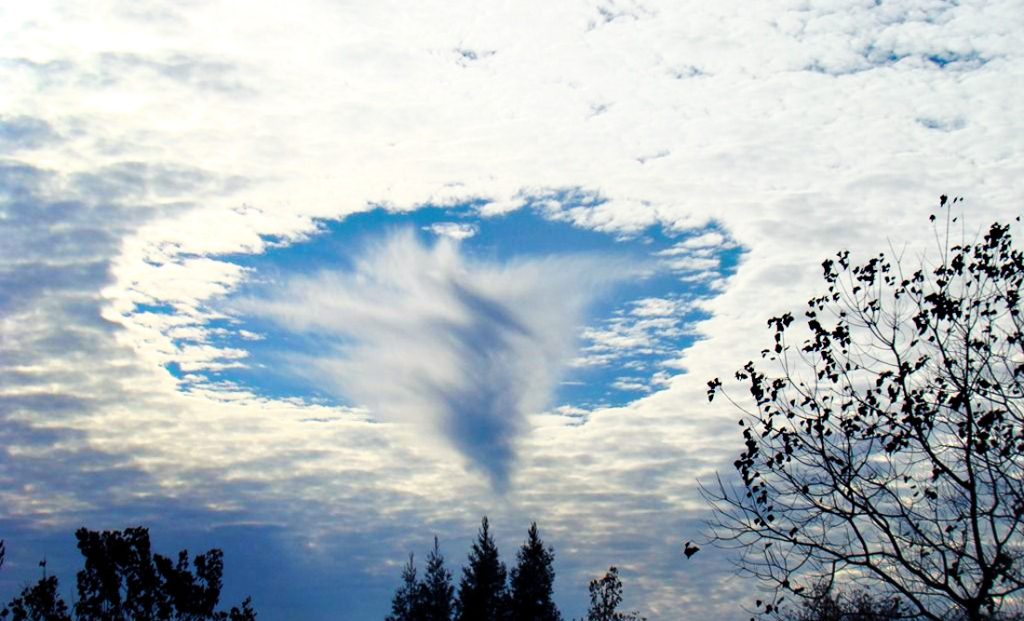
Also known as cavum or hole punch clouds, fallstreak hole clouds are another rare sight, but with their rarity comes eye-popping magnificence. They form when a layer of supercooled water droplets suddenly freezes, causing the water vapor to expand and create a hole in the cloud. This can happen when an aircraft passes through the cloud, or when there is a sudden change in temperature. Fallstreak hole clouds are usually short-lived, but they can be very spectacular while they last.
Mammatus Clouds
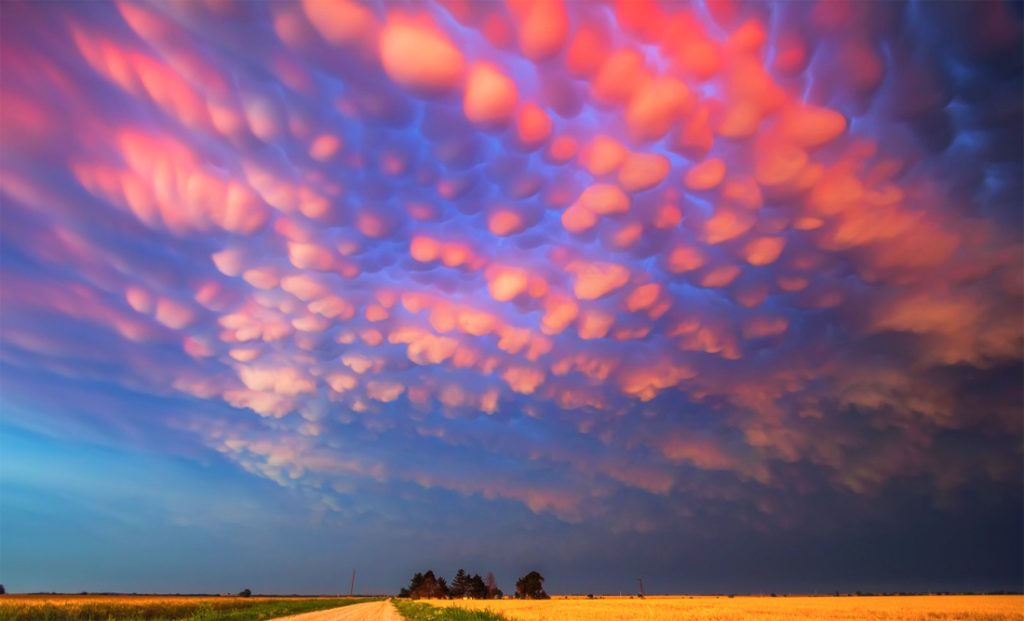
Mammatus clouds are a type of cumulonimbus cloud that is characterized by bulbous, sack-like protrusions. These protrusions can extend from the main cloud body in any direction, but are most often seen hanging downward. Mammatus clouds are usually found in the vicinity of severe thunderstorms and can extend for several miles.
While Mammatus clouds typically indicate inclement weather, they can also signify positive change. In many cultures, Mammatus clouds are seen as a sign of good luck or a harbinger of Buddha’s arrival. In Buddhism, it is believed that when Buddha was born, Mammatus clouds appeared in the sky and spread blessings across the land.
Despite their ominous appearance, Mammatus clouds are generally harmless. However, they can sometimes signify severe weather conditions such as hail or strong winds. If you see Mammatus clouds forming, it’s best to take shelter and wait for the storm to pass.
Tubular and Funnel Clouds
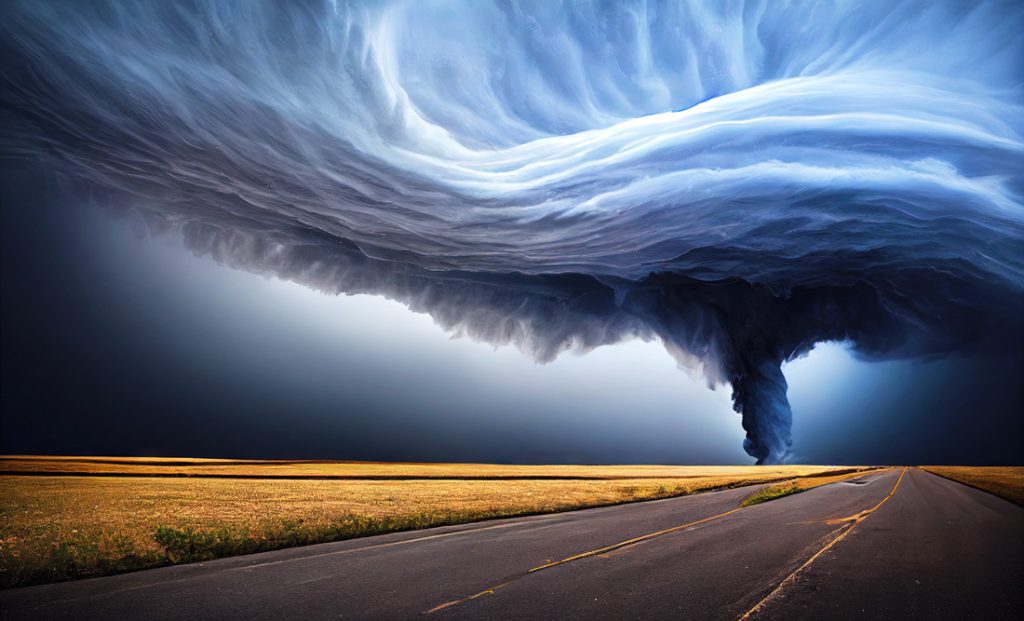
Tubular clouds, also known as funnel clouds are one of the rarer types of clouds, but they are also some of the most exquisite. They form when cold air rushes in to fill a low-pressure area. The air spirals upward, creating a funnel cloud. If the funnel cloud touches the ground, it becomes a tornado.
Tubular clouds can also be found in the mountains. When warm air rises up the side of a mountain, it can create a lenticular cloud. These clouds look like flying saucers and like lenticular clouds mentioned earlier, they are sometimes mistaken for UFO sightings!
Funnel clouds are one of the most fascinating and unusual cloud formations. These long, tapering clouds can form in any type of weather, but they are most commonly associated with thunderstorms. Funnel clouds are created when a column of rotating air (known as a mesocyclone) descends from the base of a cumulonimbus cloud. As the mesocyclone moves closer to the ground, it can create a narrow funnel-shaped cloud.
While funnel clouds typically do not touch the ground, if they do make contact, they can become tornadoes. However, not all funnel clouds will develop into tornadoes. In fact, most funnel clouds dissipate before reaching the ground.
What do tubular clouds symbolize? In many cultures, they are seen as a sign of bad luck or impending doom. In others, they are seen as a sign of good luck or a new beginning. Because these clouds have a chance of forming into a tornado, they are commonly symbolic of transformation, change, and epic transitions.
What About Common Clouds?
While I’ve hit the highlights about rare clouds and their meanings, I’d be remiss if I didn’t offer some backstory on common clouds we see daily. Here is a basic guide on common clouds.
Cirrus: These are high-level clouds that often signal the approach of bad weather. They are thin and wispy, and can be either white or pale blue in color.
Cumulus: These are low-level clouds that are often described as looking like cotton balls. They are usually white, but can also be gray or black. Cumulus clouds can bring fair weather or rain, depending on their size and shape.
Stratus: These low-level clouds are often gray and uniform in appearance. They can cover the sky completely, and sometimes produce light rain or snow.
Nimbostratus: These are dark, low-level clouds that generally indicate the approach of a storm system. Nimbostratus clouds can bring heavy rain or snowfall.
Cumulonimbus: These are large cumulus clouds that have grown vertically into thunderheads. They can bring strong winds, heavy rains, hail, and even tornadoes in some cases.
Altocumulus: These mid-level clouds often appear as patchy areas of small puffy clouds. They typically signal fair weather conditions ahead.
Altostratus: These mid-level clouds can sometimes cover the entire sky with a thin veil of gray or blue haze.’ They may precede the arrival of bad weather, but not always.’
Frequently Asked Questions About Rare Clouds
Rare clouds are not your typical cumulus or cirrus clouds. They are special formations that occur infrequently. These unusual-looking cloud formations can take many different shapes and often have very symbolic meanings.
Rare clouds typically form due to unique atmospheric conditions. For example, a lenticular cloud often forms when stable air flows over a mountain peak and creates a lens-shaped wave in the atmosphere. Another example is a roll cloud, which forms when two cold air masses meet and create a low-pressure system.
In many cultures, clouds are associated with the divine. Many myths link clouds with gods and goddesses. Clouds and their meanings include concepts like transition, change, divinity, wisdom, magic, awe, wonder, mobility, and more.
Conclusion
In closing, I hope you’ve enjoyed these insights into rare clouds and their meanings. Moreover, I trust this information inspires you to keep your eyes on the skies for magnificent cloud-spotting adventures! As always, thanks for reading!
Mighty brightly,

© Copyrighted. All Rights Reserved.
Get Firmly Rooted In Your Spiritual Growth
With These Nature Spirituality Selections From Amazon
Want more? Me too! That’s why I’ve also got this for you on Whats-Your-Sign:




